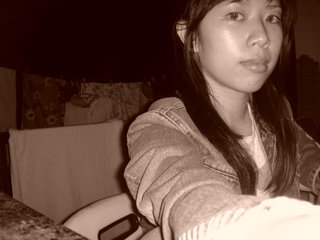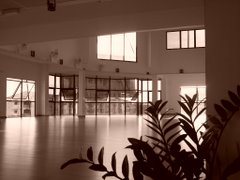 TERESA Chian has very fond memories of Bali Spirit, a three-storey cafe cum dance and yoga school in Bali run by an American entrepreneur. She discovered the creative space when she visited Bali two years ago.
TERESA Chian has very fond memories of Bali Spirit, a three-storey cafe cum dance and yoga school in Bali run by an American entrepreneur. She discovered the creative space when she visited Bali two years ago.“It was very raw, yet there was an intimacy among friends there,” she says.
Now 25, passionate dancer Chian is trying to recreate the atmosphere she enjoyed at Bali Spirit in her dance studio, Living Arts.
“This will be a space where different forms of art come together to build something,” says Chian enthusiastically as she shows me around the place. “I want people to come in and hang out and get inspired, come and go whenever they wish,” she goes on to say.
In the studio, people will learn contemporary dance such as “Funky Spears, “Hip Hop Amuro”, line dancing and even musical theatre.
Living Arts offers an airy feel and a place in which to lose your inhibitions – unlike your usual dance studio, it has no mirrors! The studio is dominated by a wide, open space, mostly covered with warm, wooden floors; it has a soaring ceiling and lots of glass windows letting in natural light adds to the airy feel. This is where most of the dance classes are held (yoga classes are held in a small room in the same floor), but unlike most dance schools, there are no mirrors in this space.
“When you do not have a mirror in front of you, you actually forget about posing and doing the right thing. The process becomes more internal and intuitive. It becomes more soulful, more rasa (with feeling),” Chian says.
She adds, “I wanted an open plan where people can just come in and just watch, experience and feel the chi (energy).” The interior of Living Arts may seem unpolished (there is no fancy furniture or gorgeously tiled floors), especially to those who have seen better décor in dance studios, but this is how Chian likes it.
In polished studios, you can’t connect, she explains. Chian has grand plans for the place. She hopes, in a year’s time, to convert the studio’s rooftop area into a cafe, and a place where people can do outdoor yoga. She also hopes to hang paintings from young, experimental artists – “nothing too landscape-y” – around the studio.
When Living Arts opened in November last year, it held free dancing classes on the first day. People dropped by to learn jazz, hip hop or even yoga. However, there aren’t any ballet classes. Nor will there ever be. “I think there are enough ballet studios out there. I want to be one of the few people who educate young audiences about modern dance,” she explains.
Though Living Arts hasn’t been open long, students are already flocking to the studio.“I didn’t like ballet,” admits Chian, who started ballet lessons when she was five and took classes until she was 17. “My toes bled all the time! I was lucky that I left the ballet world without any injuries,” she says.
Setting up Living Arts was an almost impulsive decision for Chian – her friends and family were surprised at her move. But Chian went full steam ahead: in two months, she found a place for her studio in Bandar Sunway, Petaling Jaya, renovated the place and began promoting the school.
She throws the words “energy”, “spirituality” and “rawness” around a lot, and one gets the impression that Chian regards the arts as something very spiritual thing. “Eventually I want to choreograph a piece where we do alternate dance; there will be different forms of arts coming together to build something,” she says.
Chian was exposed to dance at a young age. She was part of the dance troupe Dua Space when she was 19 (1999-2001) and then joined the influential Kwang Tung Dance Troupe in 2005. In 2004, she performed in cities around Scotland with Maxine Railton, a dance lecturer from Anniesland College, Glasgow. “I learnt to blend in and yet have my own style,” she says of her experience in Scotland. “I thought then that Westerners were better and Asians were second grade, but I realised that dance is body language,” she says. And that transcends culture.
“Dance is progressing slower than music or theatre in Malaysia,” says Chian almost wistfully. “But people are coming out to do dance in their own way,” she adds more hopefully.
Chian, for one, has great admiration for Malaysian dancers; they are multi-disciplinary dancers, she says, because they are exposed to Indian, Chinese, Malay and other ethnic dances and cultures.
“Malaysian dancers are coming into their own identity. And they have more depth and soul,” she says.




3 comments:
erm . can i get more info on the classes ? like the timetable n fees ?
hey
can u drop down yr email so i may mail u some questions.
thx
hey. i saw your article in the Star, and me and some of my friends are interested. uhm, is it okay if we just pop in one day and watch one of your classes? our folks wanna know if we like it first before we go. ~.~ thanks.
-su yin.
ps: my email is on my page. :)
Post a Comment